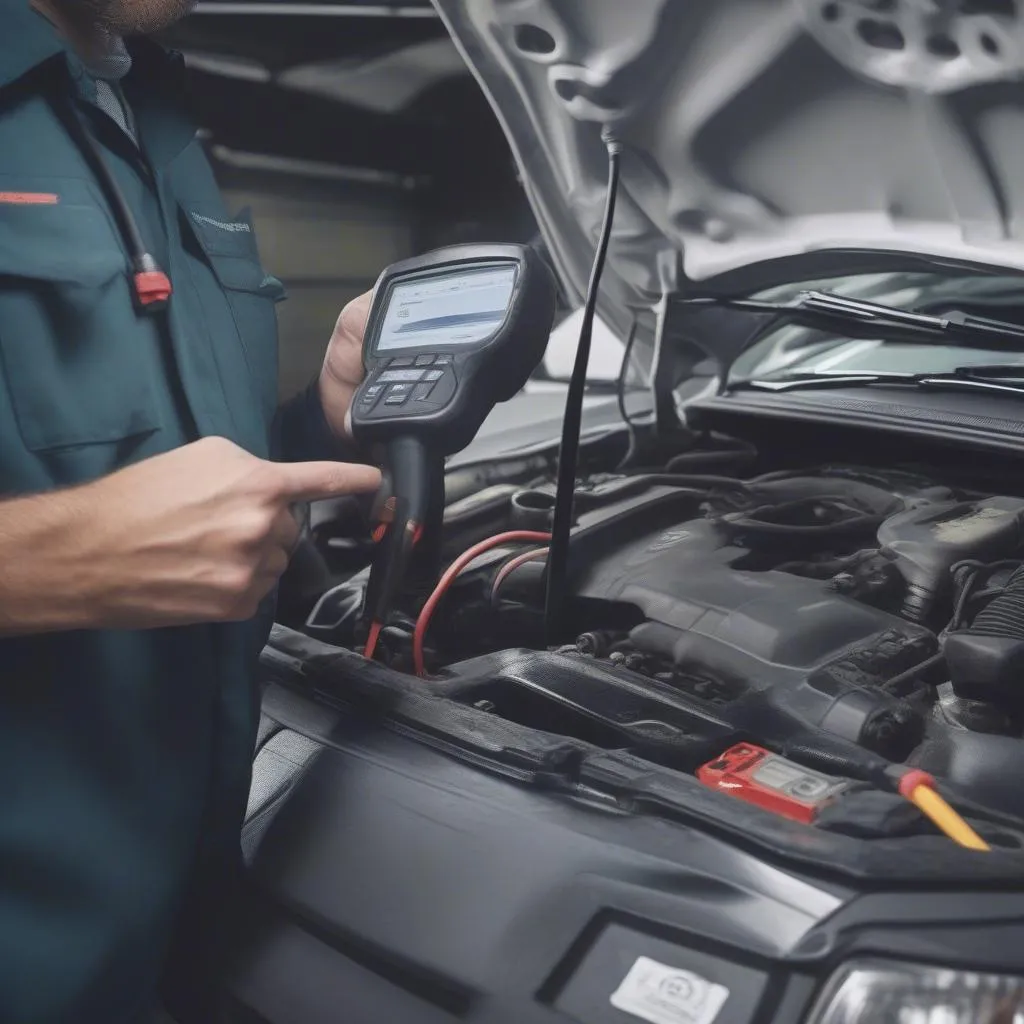Have you ever encountered a situation where your car’s ABS system malfunctioned, throwing a perplexing code that left you scratching your head? You’re not alone. Every automotive technician faces these challenges, especially with the growing complexity of modern vehicle electronics. In this guide, we’ll delve into the world of ABS code readers, unraveling their purpose, functionalities, and how they empower you to troubleshoot ABS issues like a seasoned pro.
Understanding the Significance of ABS Code Readers
ABS code readers are indispensable tools for any automotive technician, particularly when dealing with ABS system diagnostics. They act as a bridge between the vehicle’s electronic control unit (ECU) and the technician, allowing them to access, interpret, and analyze fault codes stored within the ABS system.
From a Technician’s Perspective:
Imagine a mechanic encountering a vehicle exhibiting erratic ABS behavior. The ABS light is illuminated, and the brakes seem to engage inconsistently. Using an ABS code reader, they can access the ABS ECU and retrieve specific fault codes that pinpoint the root cause of the problem. These codes provide valuable clues, directing the mechanic towards the faulty component, be it a faulty sensor, a malfunctioning pump, or a wiring issue.
Technical Perspective:
ABS systems are complex networks of sensors, actuators, and control modules. These components work in unison to regulate braking pressure, preventing wheel lockup during sudden braking maneuvers. When a component fails, the ABS ECU registers the malfunction and stores a corresponding fault code. ABS code readers decipher these codes, translating them into understandable information for the technician.
Economic Perspective:
The economic impact of ABS code readers is significant. They enable technicians to diagnose and repair ABS issues accurately and efficiently, minimizing downtime and repair costs for vehicle owners. By providing precise diagnostics, these tools help prevent unnecessary repairs and ensure that the issue is addressed correctly the first time.
Delving into the Functionality of ABS Code Readers
What ABS Code Readers Do:
-
Code Retrieval: ABS code readers connect to the vehicle’s ABS ECU and retrieve stored fault codes.
-
Code Interpretation: They translate these codes into clear and understandable descriptions, providing insights into the specific malfunction.
-
Data Logging: Some advanced readers can record real-time sensor data, allowing technicians to analyze system performance and identify intermittent problems.
-
Live Data Display: This feature allows technicians to monitor various ABS system parameters, such as wheel speed, brake pressure, and sensor readings.
-
Component Activation: Some models offer the capability to activate and test ABS components, such as the pump, solenoids, and sensors.
Types of ABS Code Readers:
-
Generic Scanners: These are budget-friendly options suitable for reading basic fault codes from most vehicle models.
-
Manufacturer-Specific Scanners: These are designed for specific brands and models, providing more in-depth diagnostics and access to advanced functions.
-
Universal Scanners: These offer comprehensive compatibility across various makes and models, providing a versatile solution for diverse workshops.
-
Dealer Level Scanners: These are high-end tools used by dealerships and provide access to the most advanced diagnostic capabilities, including programming and calibration functionalities.
Addressing Common User Queries
1. Can I Use an OBD2 Scanner to Read ABS Codes?
While OBD2 scanners can read basic fault codes, they often lack the capability to access and interpret codes specific to the ABS system. Specialized ABS code readers are necessary for comprehensive diagnostics.
2. What are Some Popular ABS Code Readers for European Cars?
For European vehicles, popular choices include:
-
Launch X431 Pro: This comprehensive diagnostic scanner boasts wide compatibility with various European makes and models.
-
Autel MaxiSys Elite: Renowned for its advanced capabilities, it offers comprehensive diagnostics, programming, and calibration functions.
-
Snap-on Zeus: A professional-grade scanner known for its extensive functionality and data analysis tools.
3. How Do I Choose the Right ABS Code Reader for My Needs?
Consider these factors:
-
Vehicle Compatibility: Choose a reader that supports your specific car model and year.
-
Features: Evaluate the specific functions, such as code retrieval, data logging, and live data display.
-
User Interface: Select a reader with a user-friendly interface and clear navigation.
-
Price: Determine your budget and choose a scanner that offers the best value for money.
Empowering Your Automotive Expertise
ABS code readers are essential tools for automotive technicians who want to conquer the challenges of modern ABS systems. By providing comprehensive diagnostics and insightful data, these devices empower you to diagnose, repair, and maintain ABS systems with confidence, ensuring the safety and reliability of your vehicles.
 ABS code reader
ABS code reader
Related Resources
- OEM Code Reader: Dive deeper into the world of OEM code readers and their advantages. https://diagxcar.com/oem-code-reader/
- Transmission Diagnostic Scan Tool: Discover specialized tools for diagnosing and repairing transmission issues. https://diagxcar.com/transmission-diagnostic-scan-tool/
- ABS Scanners: Explore a wider range of ABS scanners tailored for different needs. https://diagxcar.com/abs-scanners/
Get Expert Support Today!
For personalized assistance with diagnostics tools, software installation, and any queries related to automotive repair, reach out to us via WhatsApp at +84767531508. Our team of expert technicians is available 24/7 to provide guidance and support.
Let’s keep your vehicles running smoothly and safely!
Leave a comment below with any questions you have about ABS code readers or automotive diagnostics.
 Using a code reader
Using a code reader